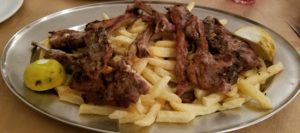I took a week long look-around trip in the Greek Islands. Here is a little graphic to put the trip into perspective.
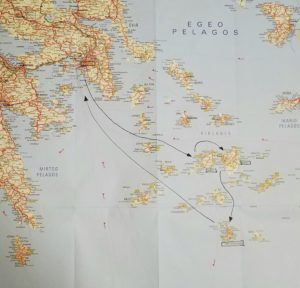
Here the full moon greets me as I arrive in Naxos.
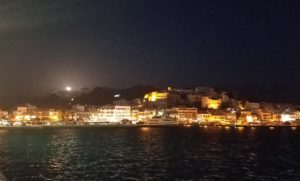
All of my travel was on the Blue Star Ferries. When the taxi first dropped me alongside one of their ships in the port of Athens, I was amazed. They are huge. 5 or 6 stories high. Very stable. Very clean. And very comfortable with numerous seating options, tables, food, bars, electricity, wi-fi, etc. This is good because the inter-island trips can take many hours.
The ships were built by the Koreans (based partially upon formula discovered by Archimedes). Only getting off is tedious, when you exit through the parking garage and the safety horns are blowing as they lower the gangplanks.
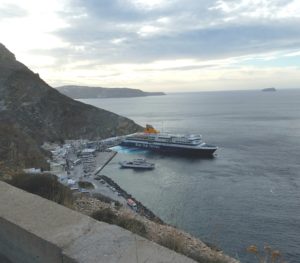
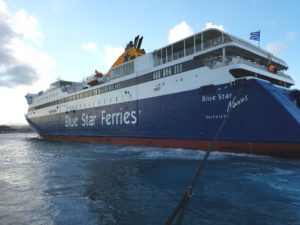
I visited Paros, Naxos, and Santorini. Santorini is a spectacular geographical place, the rim of an exploded volcano. It is great for photographers, but is being over-run with tourists, particularly mainland Chinese. I posted a separate blog about Santorini a few days ago.
Your humble correspondent on Santorini:
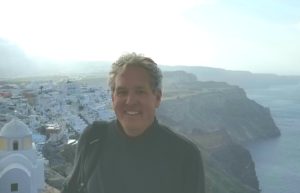
Naxos and Paros are quiet by comparison. And thinly populated. The main towns in each are very small.
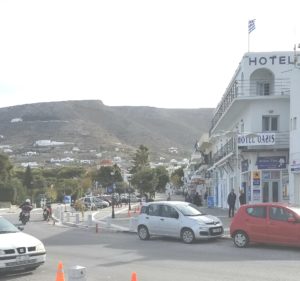
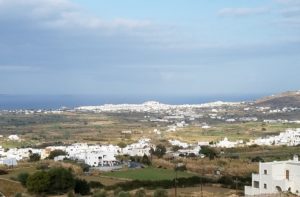
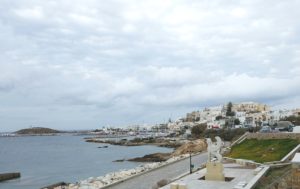
Each island has only a few small villages.
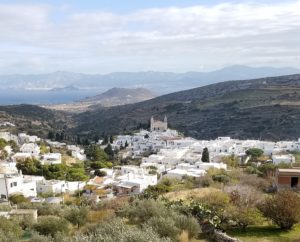
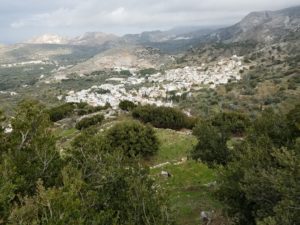
- There are a lot of vacation homes on Paros. But the islands are surprisingly empty. If a lot of tourists really come I do not know where they would put them.
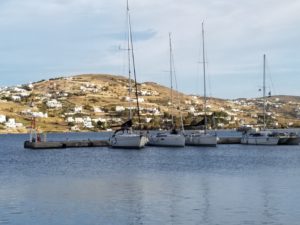
I am travelling in the winter when many hotels and restaurants are closed. Some villages seem deserted.
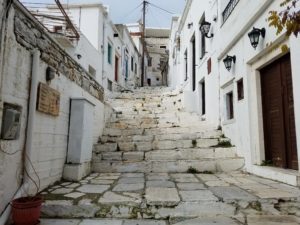
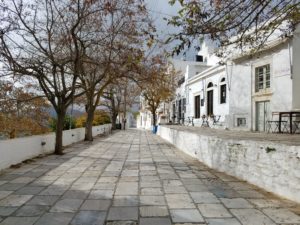
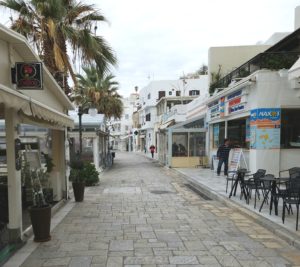
On Paros and Naxos I rented a car and drove around the islands. The roads are OK, except in the villages where they double park leaving only one lane. Outside the towns the roads were essentially empty and a hoot to drive. For a few hours anyway, after 4 or 5 hours they were exhausting. Some unusual road hazards:
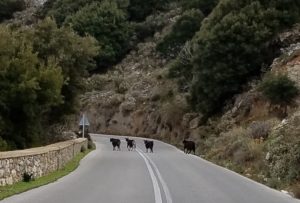
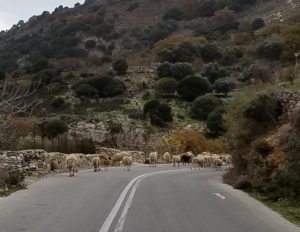
There are no gas stations outside of the few biggest villages. I ran low (well out) of gas and the only habitation I could find after a long time of near panic was this little village.
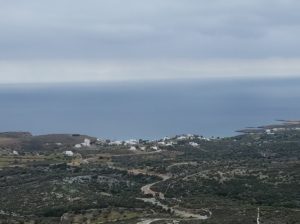
And the only person I could find was a fisherman working on his boat. He took me to his nearby home and sold me a 4 liter bottle from his personal supply.
His wife , Maria, spoke perfect English. She asked “What are you doing way out here by yourself in the winter”? I said: just looking around, and for me this is a fine spring day. They thought that this was hilarious.
Very nice people. They absolutely refused to let me help or to take any more money than the cost of the gas.
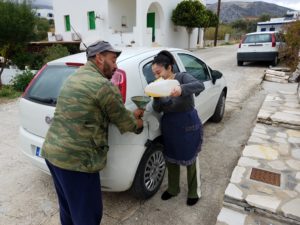
Fishing is one of the few “industries” I can see here. Other major ones are mining marble, and renting cars to tourists. Apparently the marble from Paros is of the highest quality and was the “brand” preferred by Roman sculpture-ers.

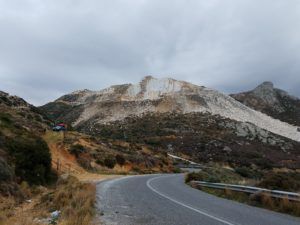
And so, that brings me to my reluctant conclusion:
The Greek islands are all about the weather.
—————————————————————————
As follows is a medley of practically useless information about the Greek Islands.
Water is an issue. There is none on Paros and practically none on Santorini. The growth of tourism is being allowed by large scale desalination plants. Basically these islands are rocks and volcanic ash. Naxos, an exception, has water and is comparatively green.
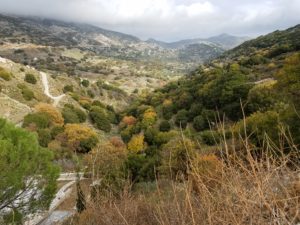
Noxos is known for its self sufficiency. They produce cheese, wine, olive oil, meat, etc. all locally.
They put these iconic little white churches in the strangest places. I missed many great photos of them (like in the cleft of a mountain) because I was on a bus or on a road where I could not stop.
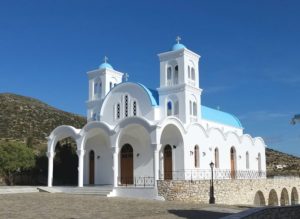
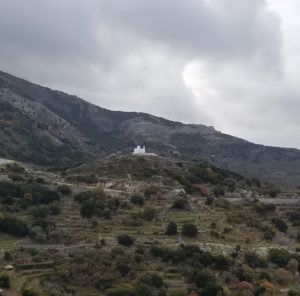
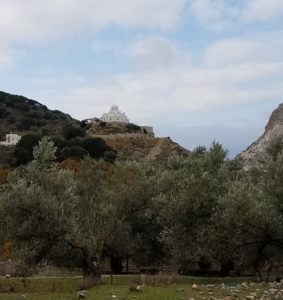
They have the biggest olive trees I have ever seen.
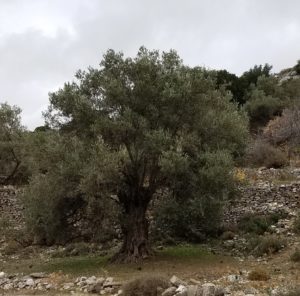
Their grape varieties can apparently grow in dust. The vines are not raised on trellises, but pruned into circles. A field of old vines looks like a field of baskets.
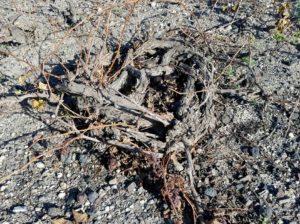
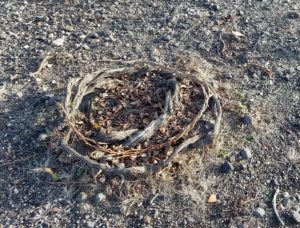
The iconic white buildings are build from volcanic stones (what else?), and covered with concrete and/or a (duh:white) plaster.
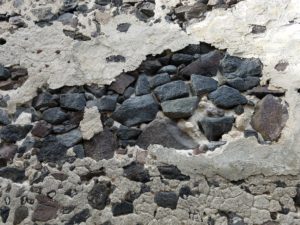

Fish are getting scarce and are now sold by weight rather than per fish. The chops from their local lambs are worth a return trip.
